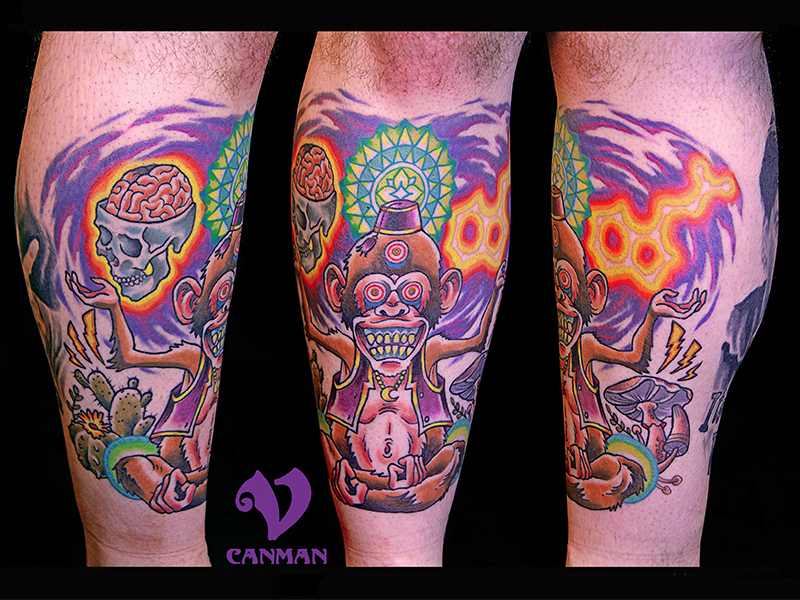Psychedelic tattoo by Canman
Interested in this type of tattoos? fill out our Tattoo consultation form to get started!
Psychedelic research has experienced a renaissance in recent years.
As we reconsider psilocybin’s potential to treat addiction, where does that leave the stoned ape hypothesis?
Did psychedelics stimulate human consciousness?
First proposed by 20th century ethnobotanist Terence McKenna (1946-2000).
in his 1992 book “Food of the Gods,” the basic concept is that the consumption of psychedelic fungi may have played a crucial role in the development of human mind and culture.
In essence, the hypothesis suggests we owe the emergence of language and self-reflection to consumption of psilocybin mushrooms.
The exact timeline for the emergence of consciousness varies, but the process may have begun as far back as 2 million years ago.
“We know the brain tripled in size about 2 million years ago.
Also, the ecosystems which put hominids, cattle and mushrooms together were around that old.
This is referring to the dung from which psilocybin mushrooms emerge.
The stoned ape hypothesis gained little traction in academic circles, but it became a staple of psychedelic culture.
The stoned ape hypothesis is not likely to leap to the level of scientific theory in the foreseeable future.
But, the sort of modern psychedelic reconnection that Terence McKenna and others advocated might well come to pass. Especially as more studies examine potential therapeutic uses.
